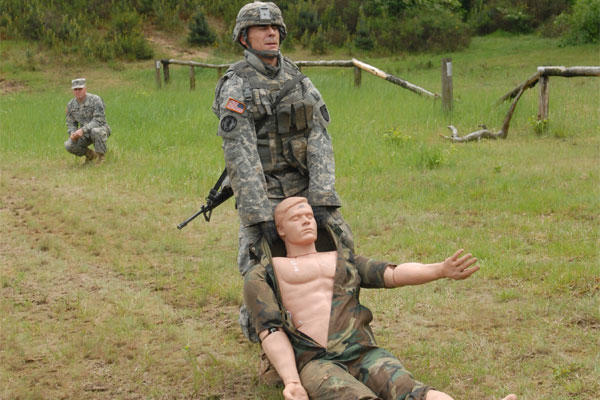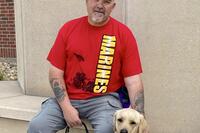The Army's top enlisted soldier said new physical standards being developed as part of the policy change to open combat positions to women will be applied across the entire service, which could have a number of second order consequences that apply to men as well.
"Here's the reality. Once we actually have the physical assessment -- based on it, we are going to go back to the force and expect soldiers... to be able to meet that standard," Sgt. Maj. of the Army Raymond Chandler III said in a speech before the Army Women's Foundation at the U.S. Capitol on Wednesday.
"Notice I said soldiers -- not male soldiers, not female soldiers -- it's all soldiers," he said. "And I guarantee you there will probably be some males who have been doing it for quite some time that are not going to be able to meet that standard."
Former Defense Secretary Leon Panetta announced in January 2013 the military planned to open combat positions to women by 2016. The Fort Stewart study now underway looks at 89 men and 58 women who have been undergoing training in tasks considered essential for any infantry or armor soldier.
These tasks include loading and reloading 60-pound anti-tank rounds, Chandler said. Though soldiers have been doing this for years there never has been a standard for it. The Army plans to change that.
The research is being done under the auspices of U.S. Army Training and Doctrine Command and U.S. Army Research Institute of Environmental Medicine, which has had soldiers conduct some of the physically demanding grunt tasks in labs where strength, endurance and energy have been measured.
At Fort Stewart, troops with the 2nd Armored Brigade Combat Team, 3rd Infantry Division are assisting in the evaluations in four military occupation specialties: 11B infantryman, 11C indirect fire infantryman, 19K armor crewman and 19D cavalry scout.
Col. Scott Jackson, commander of the 2nd ABCT, said in January that the work will provide the Army data it needs to make informed decisions "not just about the integration of women into all MOSs in the Army, but also set standards for future recruits prior to contracting for a particular MOS."
In Washington on Wednesday, retired Maj. Gen. Dee Ann McWilliams, president of the Women's Army Foundation, said that with the wars in Iraq and Afghanistan women have often acted in combat roles.
"They did everything [infantrymen did] but without the MOS," she said.
Just how much of a role women will have in the combat roles depends on a number of factors, including physical standards that, as yet, have not been established, McWiliams said.
"Without [those] established, you can't say," she said. But once they are in place, "that will cut some of the men out, too, which it doesn't now because we don't have the standards."
Integrating women into combat roles is part of the Army's overall Army of 2020 plan. Chandler said introducing women to these roles is "about managing the talent that you have and providing opportunities for everyone who serves to be the best they can be."
"That's not just a slogan from the '70s and '80s -- it's not," he said. "It's about saying who meets the standards for his job and providing a way for them to achieve not only their personal and professional goals, but to fill the needs of the Army."
-- Bryant Jordan can be reach at bryant.jordan@monster.com


























